- Home
- Margaret Atwood
On Writers and Writing Page 3
On Writers and Writing Read online
Page 3
The childhoods of writers are thought to have something to do with their vocation, but when you look at these childhoods they are in fact very different. What they often contain, however, are books and solitude, and my own childhood was right on track. There were no films or theatres in the North, and the radio didn’t work very well. But there were always books. I learned to read early, was an avid reader and read everything I could get my hands on – no one ever told me I couldn’t read a book. My mother liked quietness in children, and a child who is reading is very quiet.
Because none of my relatives were people I could actually see, my own grandmothers were no more and no less mythological than Little Red Riding Hood’s grandmother, and perhaps this had something to do with my eventual writing life – the inability to distinguish between the real and the imagined, or rather the attitude that what we consider real is also imagined: every life lived is also an inner life, a life created.
A good many writers have had isolated childhoods; a good many have also had storytellers in their lives. My primal storyteller was my brother; at first I featured only as audience, but soon was allowed to join in. The rule was that you kept going until you ran out of ideas or just wanted a turn at being the listener. Our main saga involved a race of supernatural animals that lived on a distant planet. An ignorant person might have mistaken these for rabbits, but they were ruthless carnivores and could fly through the air. These stories were adventures: war, weapons, enemies and allies, hidden treasure, and daring escapes were the main features.
Stories were for twilight, and when it was raining; the rest of the time, life was brisk and practical. There was very little said about moral and social misdemeanors – we didn’t have much opportunity for them. We did get instructions about avoiding lethal stupidity – don’t set forest fires, don’t fall out of boats, don’t go swimming in thunderstorms – that sort of thing. Because my father built everything – the cabins we lived in, our furniture, boat docks, and so forth – we had free access to hammers, saws, rasps, drills, brace-and-bits, and dangerous edged tools of every kind, and we played with them a lot. Eventually we were taught the sensible way to clean a gun (take the bullets out first, don’t look down the barrel from the front end) and how to kill a fish quickly (knife blade between the eyes). Squeamishness and whining were not encouraged; girls were not expected to do more of it than boys; crying was not viewed with indulgence. Rational debate was smiled upon, as was curiosity about almost everything.
But deep down I was not a rationalist. I was the youngest and weepiest of the family, frequently sent for naps due to fatigue, and thought to be sensitive and even a bit sickly; perhaps this was because I showed an undue interest in sissy stuff like knitting and dresses and stuffed bunnies. My own view of myself was that I was small and innocuous, a marshmallow compared to the others. I was a poor shot with a 22, for instance, and not very good with an ax. It took me a long time to figure out that the youngest in a family of dragons is still a dragon from the point of view of those who find dragons alarming.
I was five in 1945, when the War ended and balloons and colored comics returned. This was a time when I began to have more to do with cities, and with other people. The postwar housing boom was underway, and the house we now lived in was one of the new split-level boxes. My bedroom was painted a soft peach, which was a first – no other bedroom I’d ever slept in had had paint on the walls. I also went to school for the first time, during the winter months. Having to sit at a desk all day made me tired, and I was sent for more naps than ever.
Around the age of seven I wrote a play. The protagonist was a giant; the theme was crime and punishment; the crime was lying, as befits a future novelist; the punishment was being squashed to death by the moon. But who was to perform this masterpiece? I couldn’t be all the characters at once. My solution was puppets. I made the characters out of paper, and a stage from a cardboard box.
This play was not a raging success. As I recall, my brother and his pals came in and laughed at it, thus giving me an early experience of literary criticism. I stopped writing plays, and began a novel; but I never got past the opening scene, in which the main character – an ant – was being swept downriver on a raft. Perhaps the demands of a longer form were too much for me. In any case I stopped writing then, and forgot all about it. I took to painting instead, and drawing pictures of fashionable ladies, smoking cigarettes in holders and wearing fancy gowns and very high heels.
When I was eight we moved again, to another postwar bungalow, this time nearer the center of Toronto, at that time a stodgy provincial city of seven hundred thousand. I was now faced with real life, in the form of other little girls – their prudery and snobbery, their Byzantine social life based on whispering and vicious gossip, and an inability to pick up earthworms without wriggling all over and making mewing noises like a kitten. I was more familiar with the forthright mindset of boys: the rope burn on the wrist and the dead-finger trick were familiar to me – but little girls were almost an alien species. I was very curious about them, and remain so.
By now it was the late 1940s. Women, no longer required for wartime production, had been herded back into the home, and the Baby Boom was on: marriage and four kids were the ideal, and remained so for the next fifteen years. Canada was such a cultural backwater that we didn’t get the full force of this ideology – there were still some adventurous Amelia Earhart types left over, still some bluestockings, still some independent and even radical women who’d come through the thirties and forties and had always supported themselves; but smoothly run domesticity was the approved trend.
Underneath all this was a sublayer of fear: the atomic bomb had exploded, the Cold War was on, Joe McCarthy had begun his Red-bashing; it was important to look as normal, as ordinary, as non-Communist as possible. It occurred to me that my parents, once the measure of sanity and reasonableness, might be viewed by others as eccentric; perhaps no worse than harmless loonies, but possibly atheists, or unsound in some other way. I did try to be like everyone else, though I didn’t have much idea what “everyone else” was supposed to be like.
I turned ten in 1949, the age of Patti Page, the Singing Rage, who harmonized with herself on the first double-track recording I ever heard: I was becoming corrupted by popular culture, much to my parents’ dismay. This was the age of sniffling radio soap-operas, of night-time serials such as The Green Hornet and Inner Sanctum, and of magazine advertisements that played up the germ scare and urged homemakers to go to war on dirt. Pimples, bad breath, dandruff, and body odor were other ills that plagued the population, and I was fascinated by the ads on the backs of comics – tales of social failure redeemed by a tube of toothpaste, or fables about Charles Atlas, whose body-building exercises would keep bullies from kicking sand in your face at the beach.
I read the complete works of Edgar Allan Poe at this time: Poe was in the school library, as he did not deal with sex and was therefore considered suitable for children. I was addicted to the works of E. Nesbit, and I read all the Andrew Lang folk-tale collections I could find. I had no use for Nancy Drew, the girl detective – she was too wholesome for me – but I fell in love with Sherlock Holmes at the age of twelve, a hopeless but safe passion.
By this time I was in high school, at far too young an age. Children could skip grades then, but could not leave school until the age of sixteen, so I found myself in a class full of large people who shaved. I responded by developing anemia and an odd noise in my heart, and by going to sleep a lot. But then the next year I grew somewhat, and all those with leather jackets, motorcycles, and bicycle chains concealed under their socks had left, and I had been given fried liver and iron pills to pep me up, so you might say things had improved somewhat.
I was fifteen when Elvis Presley made his début: thus I could both waltz and rock-and-roll, but missed the tango, which was not then fashionable. This was the era of sock hops, of going steady, of drive-in movies, of well-meant articles by grownups about the dangers of
necking and petting. There was no sex education at our school – the gym teacher even spelled the word blood instead of pronouncing it outright, lest girls faint at the sound of it. The Pill was far in the future. Girls who got pregnant disappeared from sight. Either they’d undergone abortions which had killed or mangled them, or they’d had shotgun weddings and were washing diapers, or else they were hidden away in Homes for Unwed Mothers, where they were put to work scrubbing floors. This was a fate that needed at all costs to be avoided, and rubber panti-girdles were right on hand to help you avoid it. The entire culture seemed geared – as many have been before it – to ceaseless titillation coupled with a high brick wall.
However, I learned many things about the seedier side of life via the printed page. My reading up until the age of sixteen was wide but indiscriminate – everything from Jane Austen to True Romance magazines to pulp science fiction to Moby-Dick – but it divided generally into three kinds of books: books read in school as part of the course, acceptable books read openly outside of school – found lying around the house or got from the library – and books suspected of being taboo, peeked at while baby-sitting for careless neighbors – which is how I got my hands on Forever Amber and The Blackboard Jungle, this last a hymn to the hazards of transparent nylon blouses.
The most horrifying of these books was Peyton Place, bought furtively at the corner store and read on top of the garage roof, which could be reached by a ladder and was conveniently flat. The heroine of this book wanted to be a writer, but what she had to go through to become one was nauseating in the extreme. Never mind – she certainly had lots of material to write about. Incest, venereal disease, rape, varicose veins – it was all in there.
In school, by contrast, the curriculum was determinedly British, and just as determinedly pre-modern. I assume this was to avoid any onstage sex, though there was lots of it offstage, both as act and as possibility, and usually ending in disaster – Romeo and Juliet, The Mill on the Floss, Tess of the d’Urbervilles, The Mayor of Casterbridge. There was plenty of poetry. Teaching focused on the texts, and on the texts alone. We learned to memorize these texts, analyze their structure and style, and make précis of them, but none of them were placed in a historical or biographical context. I suppose this was the spillover from the New Criticism, though nobody mentioned that term; and nobody talked about writing as a process or a profession – as something real people actually did.
Given such conditions, how is it that I became a writer? It wasn’t a likely thing for me to have done, nor was it something I chose, as you might choose to be a lawyer or a dentist. It simply happened, suddenly, in 1956, while I was crossing the football field on the way home from school. I wrote a poem in my head and then I wrote it down, and after that writing was the only thing I wanted to do. I didn’t know that this poem of mine wasn’t at all good, and if I had known, I probably wouldn’t have cared. It wasn’t the result but the experience that had hooked me: it was the electricity. My transition from not being a writer to being one was instantaneous, like the change from docile bank clerk to fanged monster in “B” movies. Anyone looking might have thought I’d been exposed to some chemical or cosmic ray of the kind that causes rats to become gigantic or men to become invisible.
I wasn’t old enough to be at all self-conscious about what had just happened to me. If I’d read more about writers’ lives, or indeed anything at all about them, I would have concealed the shameful transformation that had just taken place in me. Instead I announced it, much to the shock of the group of girls with whom I ate my paper-bag lunches in the high-school cafeteria. One of them has since told me that she thought I was very brave to just come out with something like that; she thought I had a lot of nerve. In truth I was simply ignorant.
There was also, as it turned out, the dismay of my parents to be reckoned with: their tolerance about caterpillars and beetles and other non-human life forms did not quite extend to artists. As was their habit, they bit their tongues and decided to wait out what they hoped would be a phase, and made oblique suggestions about the necessity of having a paying job. One of my mothers friends was more cheerful. “That’s nice, dear,” she said, “because at least you’ll be able to do it at home.” (She assumed that, like all right-thinking girls, I would eventually have a home. She wasn’t up on the current dirt about female writers, and did not know that these stern and dedicated creatures were supposed to forgo all of that, in favor of warped virginity or seedy loose living, or suicide – suffering of one kind or another.)
If I had suspected anything about the role I would be expected to fulfill, not just as a writer, but as a female writer – how irrevocably doomed! – I would have flung my leaky blue blob-making ballpoint pen across the room, or plastered myself over with an impenetrable nom de plume, like B. Traven, author of The Treasure of the Sierra Madre, whose true identity has never been discovered. Or, like Thomas Pynchon, I would never have done any interviews, nor allowed my photo to appear on book jackets; but I was too young then to know about such ruses, and by now it is far too late.
In biographies there is usually some determining moment in early life that predicts the course of the future artist or scientist or politician. The child must be father to the man, and if he isn’t, the biographer will do some cut-and-paste and stick on a different head, to make it all come out right. We do so wish to believe in a logical universe. But when I look back over the life I led until I began writing, I can find nothing in it that would account for the bizarre direction I took; or nothing that couldn’t be found in the lives of many people who did not become writers.
When I published my first real collection of poetry at the age of twenty-six – “real” as opposed to the small pamphlet I myself had printed up on a flat-bed press in a friend’s cellar, as was the fashion among poets in those days – my brother wrote to me, “Congratulations on publishing your first book of poetry. I used to do that kind of thing myself when I was younger.” And perhaps that is the clue. We shared many of the same childhood pursuits, but he gave them up and turned to other forms of amusement, and I did not.
There I was, then, in 1956, still at high school, without a soul in sight who shared my view of what I should, could, and ought to be doing. I did not know anyone who was a writer, except my aunt, who wrote children’s stories for Sunday-school magazines, which to my snobbish young mind did not count. None of the novelists whose books I had read – none that wrote for adults, that is, whether trashy books or literary ones – were alive and living in Canada. I had not yet seriously begun to search for others of my kind, to ferret them out of their damp caves and secret groves, so my view at the age of sixteen was that of the general citizen: I could see only what was made clearly visible to me. It was as if the public role of the writer – a role taken for granted, it seemed, in other countries and at other times, had either never become established in Canada, or had existed once but had become extinct. To quote A. M. Klein’s “Portrait of the Poet as Landscape” – a poem I had not yet read, but was to stumble upon shortly and to imprint on, much as a newly hatched duck may imprint on a kangaroo –
It is possible that he is dead, and not discovered.
It is possible that he can be found some place
In a narrow closet, like a corpse in a detective story,
Standing, his eyes staring, and ready to fall on his face …
We are sure only that from our real society He has disappeared; he simply does not count …
… is, if he is at all, a number, an x,
a Mr. Smith in a hotel register, –
incognito, lost, lacunal.6
My first idea about writing was that I would write gushy romantic stories for pulp magazines – these paid good money, so Writers Markets informed me – and live off the avails while writing serious literature; but a couple of tries at it convinced me that I lacked the vocabulary. My next idea was that I should go to journalism school and then work for a newspaper; I thought one kind of writing might lead
to another – the kind I wanted to do, which by now had become a blend of Katherine Mansfield and Ernest Hemingway. But after I had talked to a real journalist – a second cousin my parents dredged up to discourage me – I changed my mind, because he told me that as a girl I would be put to work writing the obituaries and the ladies’ pages, and nothing else. So, having passed the examinations that were the gateway to university, and about which I still have nightmares, off I went. Once I had graduated I could teach something or other, I supposed. That wouldn’t be too bad because there would be a long summer vacation, during which I could compose my masterpieces.
I was seventeen; the year was 1957. Our professors let it be known that we were a dull lot, not nearly as exciting as the war vets who’d come back a decade earlier, filled with hard experience and lusting for knowledge, and not as exciting either as the lefties who’d caused so much ferment in the thirties, when they themselves had been at university. They were right: by and large, we were a dull lot. The boys were headed for the professions, the girls for futures as their wives. The first wore grey flannels and blazers and ties, the second camel-hair coats, cashmere twin-sets, and pearl button earrings.
But there were also the others. The others wore black turtlenecks and – if girls – black ballerina leotards under their skirts, panti-hose not having been invented yet and skirts being mandatory. These others were few in number, often brilliant, considered pretentious, and referred to as “artsy-fartsies.” At first they terrified me, and then, a couple of years later, I in turn terrified others. You didn’t have to do anything in particular to inspire this terror: you just had to understand a certain range of likes and dislikes, and to look a certain way – less manicured, paler in the face, gaunter, and of course more somber in your clothing, like Hamlet – all of which implied you could think thoughts too esoteric for ordinary people to understand. Normal youths sneered at the artsies, at least at the male ones, and sometimes threw them into snow banks. Girls of an artistic bent were assumed to be more sexually available than the cashmere twin-set ones, but also mouthier, crazier, meaner, and subject to tantrums: getting involved with one was therefore more trouble than the sex might be worth.

 Surfacing
Surfacing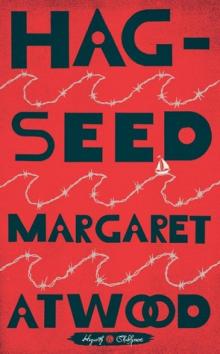 Hag-Seed
Hag-Seed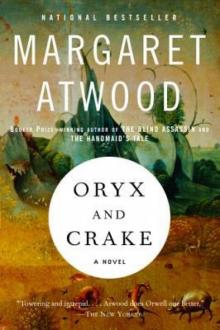 Oryx and Crake
Oryx and Crake The Heart Goes Last
The Heart Goes Last The Handmaid's Tale
The Handmaid's Tale Lady Oracle
Lady Oracle Good Bones and Simple Murders
Good Bones and Simple Murders The Robber Bride
The Robber Bride Life Before Man
Life Before Man Alias Grace
Alias Grace The Blind Assassin
The Blind Assassin Cat's Eye
Cat's Eye The Testaments
The Testaments The Penelopiad
The Penelopiad MaddAddam
MaddAddam Dancing Girls & Other Stories
Dancing Girls & Other Stories On Writers and Writing
On Writers and Writing Selected Poems II (1976-1986)
Selected Poems II (1976-1986) Wilderness Tips
Wilderness Tips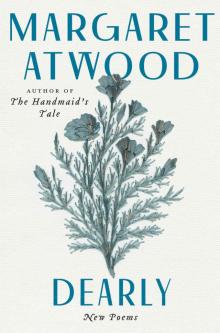 Dearly
Dearly The Tent
The Tent Bluebeard's Egg
Bluebeard's Egg The Edible Woman
The Edible Woman The Penelopiad: The Myth of Penelope and Odysseus
The Penelopiad: The Myth of Penelope and Odysseus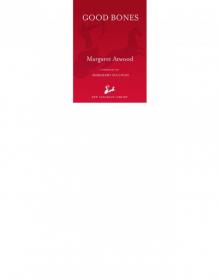 Good Bones
Good Bones I Dream of Zenia with the Bright Red Teeth
I Dream of Zenia with the Bright Red Teeth Circle Game
Circle Game Choke Collar: Positron, Episode Two
Choke Collar: Positron, Episode Two Stone Mattress: Nine Tales
Stone Mattress: Nine Tales The MaddAddam Trilogy
The MaddAddam Trilogy Stone Mattress
Stone Mattress Power Politics
Power Politics MaddAddam 03 - MaddAddam
MaddAddam 03 - MaddAddam I’m Starved for You (Kindle Single)
I’m Starved for You (Kindle Single) Murder in the Dark
Murder in the Dark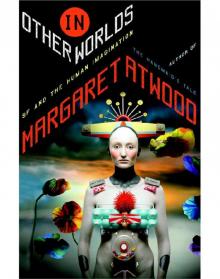 In Other Worlds
In Other Worlds Dancing Girls
Dancing Girls Moral Disorder
Moral Disorder